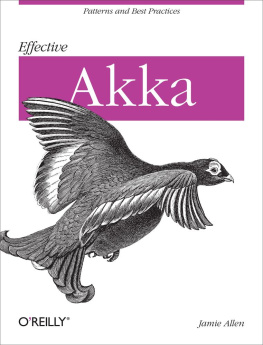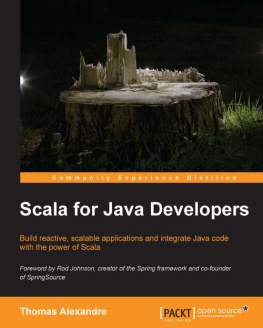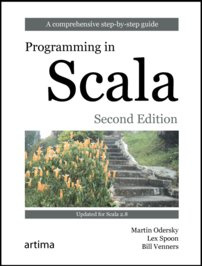Jamie Allen - Effective Akka
Here you can read online Jamie Allen - Effective Akka full text of the book (entire story) in english for free. Download pdf and epub, get meaning, cover and reviews about this ebook. year: 2013, publisher: OReilly Media, genre: Computer. Description of the work, (preface) as well as reviews are available. Best literature library LitArk.com created for fans of good reading and offers a wide selection of genres:
Romance novel
Science fiction
Adventure
Detective
Science
History
Home and family
Prose
Art
Politics
Computer
Non-fiction
Religion
Business
Children
Humor
Choose a favorite category and find really read worthwhile books. Enjoy immersion in the world of imagination, feel the emotions of the characters or learn something new for yourself, make an fascinating discovery.
- Book:Effective Akka
- Author:
- Publisher:OReilly Media
- Genre:
- Year:2013
- Rating:4 / 5
- Favourites:Add to favourites
- Your mark:
Effective Akka: summary, description and annotation
We offer to read an annotation, description, summary or preface (depends on what the author of the book "Effective Akka" wrote himself). If you haven't found the necessary information about the book — write in the comments, we will try to find it.
Avoid common mistakes when building distributed, asynchronous, high-performance software with the Akka toolkit and runtime. With this concise guide, author Jamie Allen provides a collection of best practices based on several years of using the actor model. The book also includes examples of actor application types and two primary patterns of actor usage, the Extra Pattern and Cameo Pattern.
Allen, the Director of Consulting for Typesafecreator of Akka and the Scala programming languageexamines actors with a banking-service use case throughout the book, using examples shown in Akka and Scala. If you have any experience with Akka, this guide is essential.
- Delve into domain-driven and work-distribution actor applications
- Understand why its important to have actors do only one job
- Avoid thread blocking by allowing logic to be delegated to a Future
- Model interactions as simply as possible to avoid premature optimization
- Create well-defined interactions, and know exactly what failures can occur
- Learn why you should never treat actors as you would an ordinary class
- Keep track of what goes on in production by monitoring everything
- Tune Akka applications with the Typesafe Console
Jamie Allen: author's other books
Who wrote Effective Akka? Find out the surname, the name of the author of the book and a list of all author's works by series.














